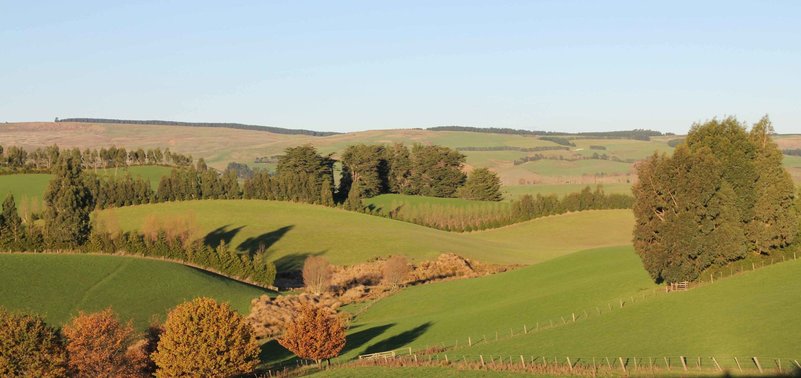Serve with pride, and watch them thrive
If there was one dish you could happily eat every day for the rest of your life, what would it be?
Sweet, savoury, exotic, humble, spicy, mild, roasted, raw … whatever came into your mind just now, you’d want it to be the best it could be, every time.
Your animals want the same. Nothing pleases them more, or keeps them in better shape, than first-class food. Fortunately, you don’t have to be a gourmet chef to dish up perfection. You don’t even have to spend any money.
You just need to practice the gastronomy of grass, and in no time at all, your whole system will be cooking with gas.

Ruminate on this
Pretend for a moment you run a restaurant instead of a farm. To keep your discerning customers happy (and healthy!), you need to serve them what they want.
But how well do you really understand their tastes? What do these customers look for in a great meal?
Just the right amount of fibre, for a start. Enough to stimulate chewing and rumen activity, but not so much it takes them forever to consume and digest a single serving. Given a choice, they prefer forage containing about 45% Neutral Detergent Fibre (NDF).
They’re also quite partial to protein in their meal – at least 12% for growing animals, 17% for lactating mums. Pasture-wise, clover is always their first pick, complemented by soft, juicy, fresh ryegrass.

Minimising seedhead and dead matter is key.
What a mouthful!
We use calories to measure the amount of energy in human food. The equivalent in food for ruminants is metabolisable energy, or ME for short.
This describes the amount of energy available to your cattle, cows, sheep and deer for maintenance, growth and production after methane losses, urination and defecation.
Just as they always need the right amounts of fibre and protein in their diet, they also need energy. You’re growing this fuel in every paddock on the farm. No matter what your system, you are first and foremost an energy farmer.
And the more energy you can generate through pasture, the more profitable and resilient your business becomes.
How can 9 = 0?
Most measuring systems start at zero. ME does not. If you offer animals food that scores 9 on the ME scale, you’re giving them enough to survive, but no more. In this context, 9 really does equal 0 – no production, no growth.
10 is better – 9 units of energy go to animal maintenance, 1 goes to production or growth. But 11 is twice as good! Now you’ve doubled the amount of energy available for production or growth. Hit 12, and you’ve tripled it.
High ME pasture does more than increase animal output, however. It’s physically easier and nicer to eat, so animals naturally consume more.
Everyone wins. Animals thrive. Grazing management becomes easier. Production improves. Efficiency climbs. Every kilo of meat or milk costs less to produce. All because you have generated 2 or 3 extra units of energy per ha.

Pasture left too long goes yellow in the base – not nice to eat.
The secret ingredient
What’s the difference between a pasture that scores 9 on the ME scale and one that scores 12? You are! Your decisions are the single biggest influence on pasture quality, from species sown to time of grazing.
In fact, it’s surprisingly easy to lose (or gain) 1 unit of energy through pasture management alone, especially at this time of year.
So, to give your animals the best food possible, start by always getting those post-grazing residuals right. Whether it’s 4 cm or 6 cm, pick a target, stick to it, and make sure everyone who moves animals off a paddock knows it too.
Committing to just this one goal of maintaining consistent residuals all year will make a world of difference, elevating your pasture meals from ‘meh’ to ‘masterful’ before you know it.
Real world practicalities
The weather will interfere with your quality goals, as will other things like periods of fast growth. But don’t be put off. Get back on track as soon as you can after any disruptions.
Mowing for silage or topping can be very helpful when grass is over-abundant. Just make sure the blades are nice and sharp, and cut at the same height as you would graze.
On sheep and beef farms, mixing up different classes of stock can achieve a similar effect as mowing.
Above all, when challenges arise, set your priorities. Remember, you’re an energy farmer. So focus on generating high energy from your best pastures, and feed this to your most productive animals.
We are here to help you succeed. Book your free Pasture Health Check today.


